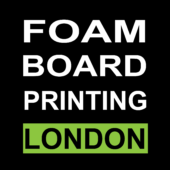White foam board, commonly known as foam core, is a lightweight and sturdy material that has gained immense popularity in various industries, including art, photography, education, and signage. Composed of a layer of polystyrene foam sandwiched between two sheets of paper or plastic, foam board offers a unique combination of durability and flexibility, making it ideal for a wide range of applications.
Composition and Characteristics
The construction of white foam board typically involves a central core of polystyrene foam, which provides excellent insulation and shock absorption. This foam is covered with smooth, white surfaces, usually made of paper or a thin layer of plastic. The result is a material that is not only lightweight but also rigid enough to hold its shape under normal conditions.
One of the key characteristics of white foam board is its versatility. It can be easily cut, shaped, and manipulated using standard tools such as utility knives or scissors. This adaptability makes it suitable for various projects, from creating model displays to crafting presentations.
Uses of White Foam Board
- Art and Crafts: Artists and crafters often use white foam board as a canvas for painting, drawing, or other mixed media projects. Its smooth surface allows for easy application of various art materials, and the lightweight nature of foam board makes it easy to handle and transport.
- Signage: Due to its lightweight and durable properties, foam board is widely used for creating signs, posters, and displays. Whether for advertising, informational signage, or event displays, white foam board provides a professional look that can easily grab attention.
- Photography: In the realm of photography, white foam board serves as a reflector to bounce light onto subjects, enhancing the quality of photographs. Photographers also use it as a backing for display prints or to create temporary backgrounds for shoots.
- Education: Teachers and students utilize white foam board for various educational projects, such as dioramas, presentations, and science fair displays. Its ease of use allows students to express their creativity while effectively conveying information.
- Model Making: Architects, designers, and hobbyists frequently turn to white foam board for model making. Its lightweight nature allows for intricate designs and structures without the added weight of other materials, making it easier to transport and display.
Advantages of White Foam Board
The popularity of white foam board can be attributed to several advantages it offers:
- Lightweight: Easy to handle and transport, making it an ideal choice for both personal and professional projects.
- Cost-Effective: Generally affordable, white foam board allows users to create high-quality displays and projects without breaking the bank.
- Customizable: Available in various thicknesses and sizes, it can be easily cut and shaped to meet specific project requirements.
- Smooth Surface: The white finish provides a clean and professional appearance, making it suitable for high-quality presentations and displays.
- Durability: While lightweight, foam board is sturdy enough to withstand regular handling, making it an excellent choice for both temporary and long-term applications.
Conclusion
White foam board is an incredibly versatile material that serves a multitude of purposes across various industries. Whether you are an artist looking for a new canvas, a teacher seeking a medium for student projects, or a business in need of effective signage, foam board provides a lightweight, durable, and cost-effective solution. Its adaptability and ease of use make it a favorite among hobbyists and professionals alike, ensuring its continued relevance in a wide array of applications. So, the next time you embark on a creative project, consider using white foam board as your medium of choice!
